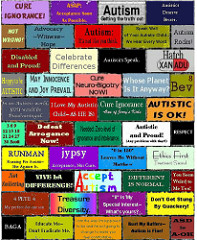A Facebook friend of mine posted this problem for folks to solve:
90 – 100 ( 6 + 3 ) = ?
Answers included 0, -90, 810 and -810. The correct answer is -810. Some of you are sniggering at the errors — quit that!
Now, if you didn’t get -810, hang on …
Why do people have problems solving math equations? It’s not that they’re stupid, but that:
- they get confused;
- are anxious;
- the teaching was boring;
- they’ve moved around and have missed bits here and there;
- they’ve learning difficulties;
- the teachers are trapped following the text and the text is a mile-wide and an inch deep and not in sensible order;
- the teaching made no sense or was based upon “just memorise how to do this process” instead of understanding why or when to use what methods;
- … and sometimes people have problems for several reasons.
Hey folks, don’t feel badly if you got it wrong. I had trouble with the maths in school, too! I didn’t even learn all my multiplication tables until 8th grade. You know what? It’s not fatal; I slowly went through some pre-College Algebra classes at my local community (junior) college, and filled in the confused bits, gained confidence, and eventually went on to introductory Calculus.
And I still have to pause and think on some of my multiplication facts, and still have days when I’m prone to reversing numbers. But those difficulties don’t detract from the fact that I am able to learn math, and they don’t mean I’m stupid. (“Take THAT, ‘Mr. Dull’!” she says, shaking her fist at a middle-school algebra teacher.)
But now I work with students in 7th – 12th grade math, and you know what? Good news! It makes a lot more sense when you go back and review it as an adult! You can fill in the parts you missed or didn’t understand, and get a better idea of how it all fits together. Honestly.
Math no longer terrifies me, even though my brain still has that glitch that prevents me from memorising the quadratic formula. But I never use the quadratic formula in real life.
I DO use ratios in real life, for example, adjusting a recipe, figuring how much stuff to put on my garden, planning travel time… And I’ll show you how to do those really easily, without getting all tangled up in multiple steps, and you don’t need some mysterious “intuitive feel for how to set the problem up”.
.~#~.
MEANWHILE, In our problem above we use Order of Operations. I tell my students, “You use Order of Operations every day! You put your tee on before you put on your shirt, and you put on your jacket last.”
The problem above is solved like this:







